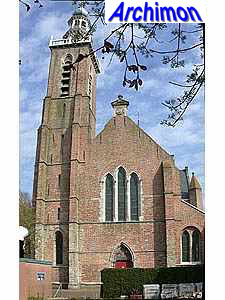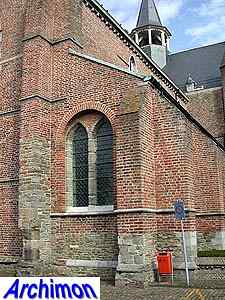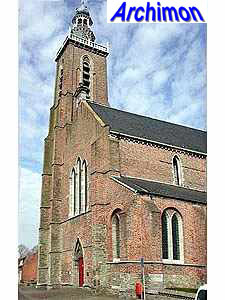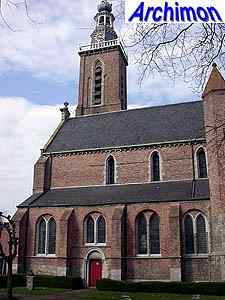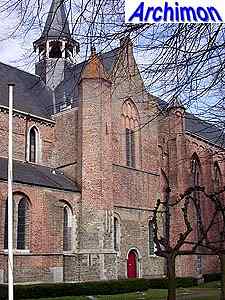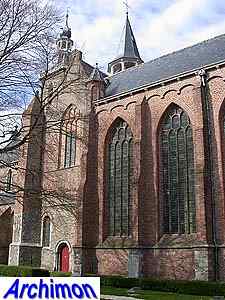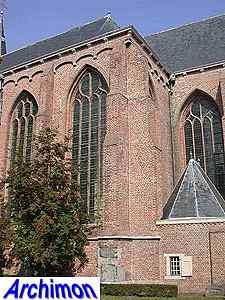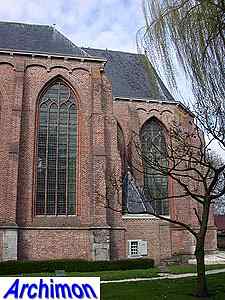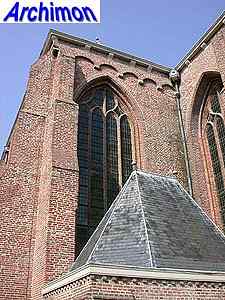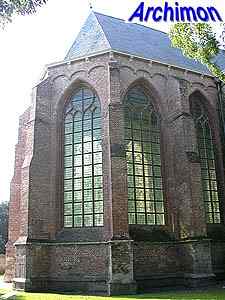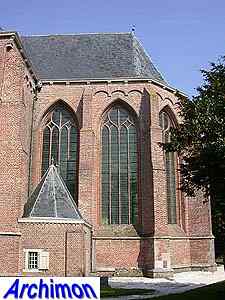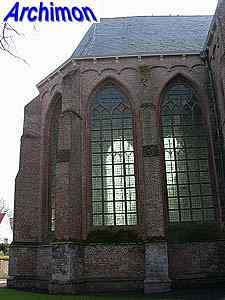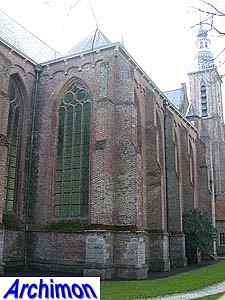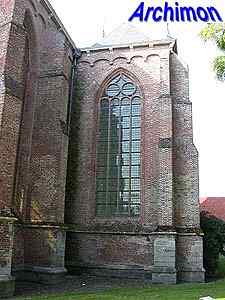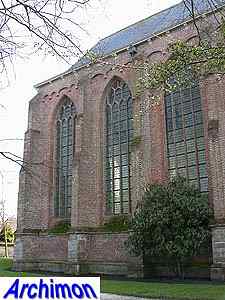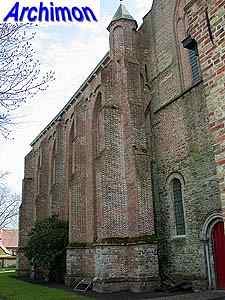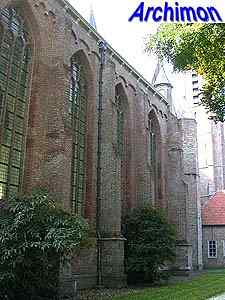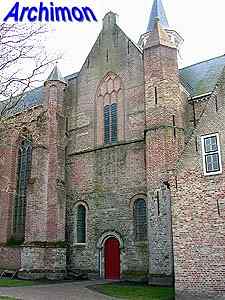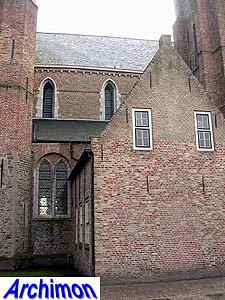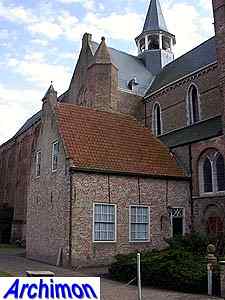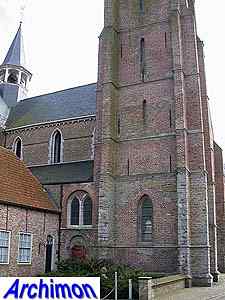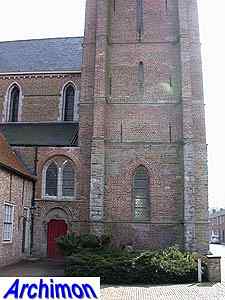
Aardenburg (Z): reformed church or St. Bavo
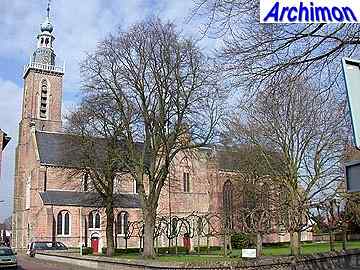 Aardenburg oldest building
is the reformed church, which until 1604 was used by the catholics and
known as the St. Bavo. The western part of the church dates from the
13th century, when a new church was built on the foundations of an
earlier Romanesque church which was built in the year 959 by monks from
Gent and which burnt down in 1202. In Flanders, of which Aardenburg was
part then, churches were built in the Schelde-Gothic style, an early
variant of Gothic
that still featured
Romanesque elements. This church is the most complete example
of this style in the Netherlands. Characteristics of this style present
in this church are the (reconstructed) tripartite west window, the
early Gothic lancetwindows of the clerestorey, the triforium with
coupled columns and the polygonal stair-turrets that flank each
transept-arm. The shape of the windows of the side-aisles and the lower
parts of the transept are still closer to Romanesque than to Gothicism.
It is possible that stones from the former Roman castellum have been
used in the oldest parts of the church.
Aardenburg oldest building
is the reformed church, which until 1604 was used by the catholics and
known as the St. Bavo. The western part of the church dates from the
13th century, when a new church was built on the foundations of an
earlier Romanesque church which was built in the year 959 by monks from
Gent and which burnt down in 1202. In Flanders, of which Aardenburg was
part then, churches were built in the Schelde-Gothic style, an early
variant of Gothic
that still featured
Romanesque elements. This church is the most complete example
of this style in the Netherlands. Characteristics of this style present
in this church are the (reconstructed) tripartite west window, the
early Gothic lancetwindows of the clerestorey, the triforium with
coupled columns and the polygonal stair-turrets that flank each
transept-arm. The shape of the windows of the side-aisles and the lower
parts of the transept are still closer to Romanesque than to Gothicism.
It is possible that stones from the former Roman castellum have been
used in the oldest parts of the church.
In the 14th century the choir was replaced by a new one, a hall-choir
consisting of three aisles of equal height, in a more mature Gothic
style. Only the middle aisle extends at the back and has a polygonal
closure.
When the protestants took the building in 1604 it was damaged too much
for immediate use. The tower was repaired in 1607 while the roofs of
the nave and side-aisles weren't renewed until 1626 and 1628
respectively. In 1646 a lantern was built on top of the tower.
In 1944 the church was badly damaged. When the upper part of the tower
fell on the church in 1945 this caused even more damage. From 1947
until 1956 the church was restored. Work included the reconstruction of
the tripartite window, traces of the previous round-topped window are
still visible, as well as of the upper part of the facade. The upper
part of the tower, with the lantern, was rebuilt in 1954-1956.
